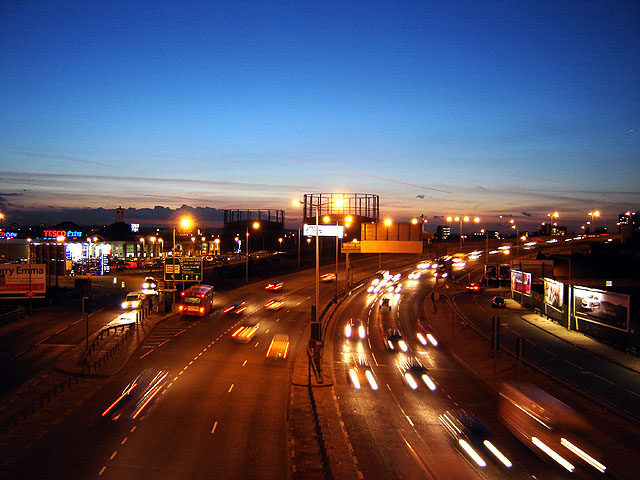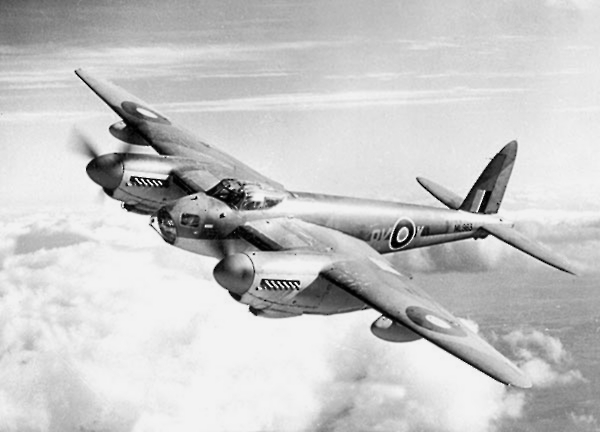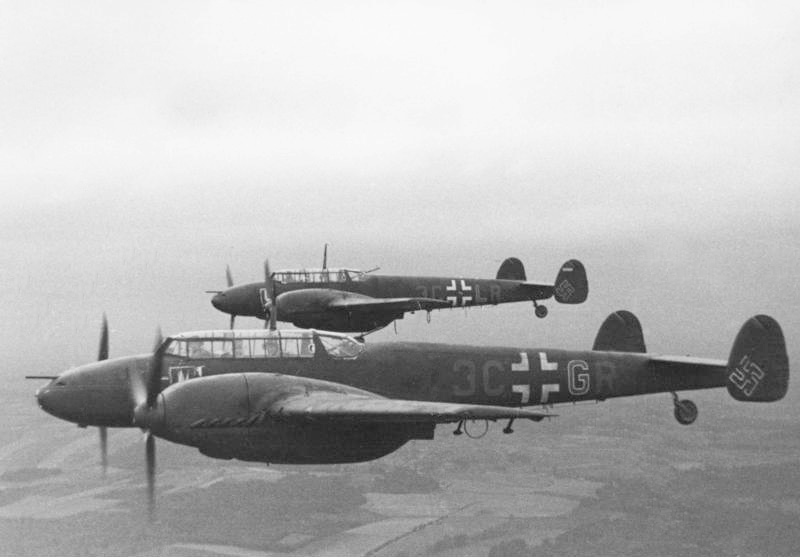|
William Rolls
William Thomas Edward Rolls (6 August 1914 – July 1988) was a British flying ace of the Royal Air Force Volunteer Reserve (RAFVR) during the Second World War. He was credited with the destruction of at least 17 aircraft of the Axis powers. From Edmonton in London, Rolls joined the RAFVR in 1939. Called up for service in the Royal Air Force (RAF) on the outbreak of the Second World War, he was posted to No. 72 Squadron in June 1940. He flew extensively during the Battle of Britain and destroyed a number of aircraft. After the battle, he performed instructing duties until late 1941 when he was posted to No. 122 Squadron and was part of several operations over the French coast. In mid-1942 he was sent to Malta, joining No. 126 Squadron. He shot down a number of aircraft before being hospitalised and repatriated to the United Kingdom as a consequence of injuries received during the aftermath of a bombing raid. Once recovered, he performed staff duties for the remainder ... [...More Info...] [...Related Items...] OR: [Wikipedia] [Google] [Baidu] |
Edmonton, London
Edmonton is a town in north London, England within the London Borough of Enfield, a local government district of Greater London. The northern part of the town is known as Lower Edmonton or Edmonton Green, and the southern part as Upper Edmonton. Situated north-northeast of Charing Cross, it borders Enfield to the north, Chingford to the east, and Tottenham to the south, with Palmers Green and Winchmore Hill to the west. The population of Edmonton was 82,472 as of 2011. The town forms part of the ceremonial county of Greater London and until 1965 was in the ancient county of Middlesex. Historically a parish in the Edmonton Hundred of Middlesex, Edmonton became an urban district in 1894, and a municipal borough in 1937. Local government took place at the now-demolished Edmonton Town Hall in Fore Street between 1855 and 1965. In 1965, following reform of local government in London, the municipal borough and former parish of Edmonton was abolished, merging with that of Enfiel ... [...More Info...] [...Related Items...] OR: [Wikipedia] [Google] [Baidu] |
Gatwick Airport
Gatwick Airport (), also known as London Gatwick , is a major international airport near Crawley, West Sussex, England, south of Central London. In 2021, Gatwick was the third-busiest airport by total passenger traffic in the UK, after Heathrow and Stansted airports, and was the 36th-busiest in Europe by total passenger traffic. It covers a total area of . Gatwick opened as an aerodrome in the late 1920s; it has been in use for commercial flights since 1933. The airport has two terminals, the North Terminal and the South Terminal, which cover areas of and respectively. It operates as a single-runway airport, using a main runway with a length of . A secondary runway is available but, due to its proximity to the main runway, can only be used if the main runway is not in use. In 2018, 46.1 million passengers passed through the airport, a 1.1% increase compared with 2017. History The land on which Gatwick Airport stands was first developed as an aerodrome in the la ... [...More Info...] [...Related Items...] OR: [Wikipedia] [Google] [Baidu] |
Kent
Kent is a county in South East England and one of the home counties. It borders Greater London to the north-west, Surrey to the west and East Sussex to the south-west, and Essex to the north across the estuary of the River Thames; it faces the French department of Pas-de-Calais across the Strait of Dover. The county town is Maidstone. It is the fifth most populous county in England, the most populous non-Metropolitan county and the most populous of the home counties. Kent was one of the first British territories to be settled by Germanic tribes, most notably the Jutes, following the withdrawal of the Romans. Canterbury Cathedral in Kent, the oldest cathedral in England, has been the seat of the Archbishops of Canterbury since the conversion of England to Christianity that began in the 6th century with Saint Augustine. Rochester Cathedral in Medway is England's second-oldest cathedral. Located between London and the Strait of Dover, which separates England from mainla ... [...More Info...] [...Related Items...] OR: [Wikipedia] [Google] [Baidu] |
Medium Bomber
A medium bomber is a military bomber Fixed-wing aircraft, aircraft designed to operate with medium-sized Aerial bomb, bombloads over medium Range (aeronautics), range distances; the name serves to distinguish this type from larger heavy bombers and smaller light bombers. Mediums generally carried about two tons of bombs, compared to light bombers that carried one ton, and heavies that carried four or more. The term was used prior to and during World War II, based on available parameters of Aircraft engine, engine and Aerospace engineering, aeronautical technology for bomber aircraft designs at that time. After the war, medium bombers were replaced in world air forces by more advanced and capable aircraft. History In the early 1930s many air forces were looking to modernize their existing bomber aircraft fleets, which frequently consisted of older biplanes. The new designs were typically twin-engined monoplanes, often of all-metal construction, and optimized for high enough pe ... [...More Info...] [...Related Items...] OR: [Wikipedia] [Google] [Baidu] |
Dornier Do 17
The Dornier Do 17 is a twin-engined light bomber produced by Dornier Flugzeugwerke for the German Luftwaffe during World War II. Designed in the early 1930s as a ''Schnellbomber'' ("fast bomber") intended to be fast enough to outrun opposing aircraft, the lightly built craft had a twin tail and "shoulder wing". Sometimes referred to as the ''Fliegender Bleistift'' ("flying pencil"), it was popular among its crews due to its handling, especially at low altitude, which made the Do 17 harder to hit than other German bombers. The Do 17 made its combat debut in 1937 during the Spanish Civil War, operating in the Condor Legion in various roles. Along with the Heinkel He 111 it was the main bomber type of the German air arm in 1939–1940. The Dornier was used throughout the early war, and saw action in significant numbers in every major campaign theatre as a front line aircraft until the end of 1941, when its effectiveness and usage was curtailed as its bomb load and range were limi ... [...More Info...] [...Related Items...] OR: [Wikipedia] [Google] [Baidu] |
Heavy Fighter
A heavy fighter is a historic category of fighter aircraft produced in the 1930s and 1940s, designed to carry heavier weapons, and/or operate at longer ranges than light fighter aircraft. To achieve performance, most heavy fighters were twin-engine, and many had multi-place crews; This was in contrast to light fighters, which were typically single-engine and single-crew aircraft. In Germany, they were known as ''Zerstörer'' ("destroyer"). The heavy fighter was a major design class during the pre-World War II period, conceived as long-range escort fighters or heavily-armed bomber destroyers. Most such designs failed in this mission, as they could not maneuver with the more conventional, single-engine fighters, and suffered heavy losses. Most notable among such designs was the Messerschmitt Bf 110, which suffered great losses during the Battle of Britain. An exception was the American Lockheed P-38 Lightning, which proved an effective heavy fighter; even against smaller, lighter, ... [...More Info...] [...Related Items...] OR: [Wikipedia] [Google] [Baidu] |
Messerschmitt Bf 110
The Messerschmitt Bf 110, often known unofficially as the Me 110,Because it was built before ''Bayerische Flugzeugwerke'' became Messerschmitt AG in July 1938, the Bf 110 was never officially given the designation Me 110. is a twin-engine (Destroyer, heavy fighter), fighter-bomber (''Jagdbomber'' or ''Jabo''), and night fighter (''Nachtjäger'') developed in Nazi Germany in the 1930s and used by the Luftwaffe during World War II. Hermann Göring was a proponent of the Bf 110, believing its heavy armament, speed, and range would make the Bf 110 the Luftwaffe’s premier offensive fighter. Early variants were armed with two MG FF 20 mm cannon, four 7.92 mm (.312 in) MG 17 machine guns, and one 7.92 mm (.312 in) MG 15 machine gun for defence (later variants would replace the MG FFs with MG 151s and the rear gunner station would be armed with the twin-barreled MG 81Z). Development work on an improved type to replace the Bf 110 - the Messerschmitt Me 210 - began be ... [...More Info...] [...Related Items...] OR: [Wikipedia] [Google] [Baidu] |
Luftwaffe
The ''Luftwaffe'' () was the aerial-warfare branch of the German ''Wehrmacht'' before and during World War II. Germany's military air arms during World War I, the ''Luftstreitkräfte'' of the Imperial Army and the '' Marine-Fliegerabteilung'' of the Imperial Navy, had been disbanded in May 1920 in accordance with the terms of the 1919 Treaty of Versailles which banned Germany from having any air force. During the interwar period, German pilots were trained secretly in violation of the treaty at Lipetsk Air Base in the Soviet Union. With the rise of the Nazi Party and the repudiation of the Versailles Treaty, the ''Luftwaffe''s existence was publicly acknowledged on 26 February 1935, just over two weeks before open defiance of the Versailles Treaty through German rearmament and conscription would be announced on 16 March. The Condor Legion, a ''Luftwaffe'' detachment sent to aid Nationalist forces in the Spanish Civil War, provided the force with a valuable testing grou ... [...More Info...] [...Related Items...] OR: [Wikipedia] [Google] [Baidu] |
RAF Biggin Hill
London Biggin Hill Airport is an operational general aviation airport at Biggin Hill in the London Borough of Bromley, located south-southeast of Central London. The airport was formerly a Royal Air Force station RAF Biggin Hill, and a small enclave on the airport still retains that designation. Biggin Hill is best known for its role during the Battle of Britain in the Second World War, when it served as one of the principal fighter bases protecting London and South East England from attack by German Luftwaffe bombers. Over the course of the war, fighters based at Biggin Hill claimed 1,400 enemy aircraft, at the cost of the lives of 453 Biggin Hill based aircrew. The airport has a CAA Ordinary Licence (Number P804) that allows flights for the public transport of passengers or for flying instruction as authorised by the licensee (Regional Airports Limited). It specialises in general aviation, handling a spectrum of traffic from private aviation to large business jets. It c ... [...More Info...] [...Related Items...] OR: [Wikipedia] [Google] [Baidu] |
Northumberland
Northumberland () is a county in Northern England, one of two counties in England which border with Scotland. Notable landmarks in the county include Alnwick Castle, Bamburgh Castle, Hadrian's Wall and Hexham Abbey. It is bordered by land on three sides; by the Scottish Borders region to the north, County Durham and Tyne and Wear to the south, and Cumbria to the west. The fourth side is the North Sea, with a stretch of coastline to the east. A predominantly rural county with a landscape of moorland and farmland, a large area is part of Northumberland National Park. The area has been the site of a number of historic battles with Scotland. Name The name of Northumberland is recorded as ''norð hẏmbra land'' in the Anglo-Saxon Chronicle, meaning "the land north of the Humber". The name of the kingdom of ''Northumbria'' derives from the Old English meaning "the people or province north of the Humber", as opposed to the people south of the Humber Estuary. History ... [...More Info...] [...Related Items...] OR: [Wikipedia] [Google] [Baidu] |
RAF Acklington
Royal Air Force Acklington, simply known as RAF Acklington, is a former Royal Flying Corps and Royal Air Force station located south west of Amble, Northumberland and north east of Morpeth, Northumberland. The airfield was operational initially from 1916 being used by the Royal Flying Corps (RFC) and from April 1918 its successor the Royal Air Force (RAF) before being closed in 1920 however it was reopened in 1938 being used by the RAF until 1972. After 1972 the site was turned over to Her Majesty's Prison Service for the creation of two new prisons. History First World War Acklington was an aerodrome during the First World War and known as Royal Flying Corps Station Southfields. Second World War The airfield was reopened on Friday 1 April 1938 being renamed to RAF Acklington where No. 7 Armament Training Station was formed which on 15 November 1938 transformed into No. 2 Air Observers School. During September 1939 the school moved to RAF Warmwell and the airfield was hande ... [...More Info...] [...Related Items...] OR: [Wikipedia] [Google] [Baidu] |
Supermarine Spitfire
The Supermarine Spitfire is a British single-seat fighter aircraft used by the Royal Air Force and other Allied countries before, during, and after World War II. Many variants of the Spitfire were built, from the Mk 1 to the Rolls-Royce Griffon engined Mk 24 using several wing configurations and guns. It was the only British fighter produced continuously throughout the war. The Spitfire remains popular among enthusiasts; around 70 remain airworthy, and many more are static exhibits in aviation museums throughout the world. The Spitfire was designed as a short-range, high-performance interceptor aircraft by R. J. Mitchell, chief designer at Supermarine Aviation Works, which operated as a subsidiary of Vickers-Armstrong from 1928. Mitchell developed the Spitfire's distinctive elliptical wing with innovative sunken rivets (designed by Beverley Shenstone) to have the thinnest possible cross-section, achieving a potential top speed greater than that of several contemporary figh ... [...More Info...] [...Related Items...] OR: [Wikipedia] [Google] [Baidu] |






